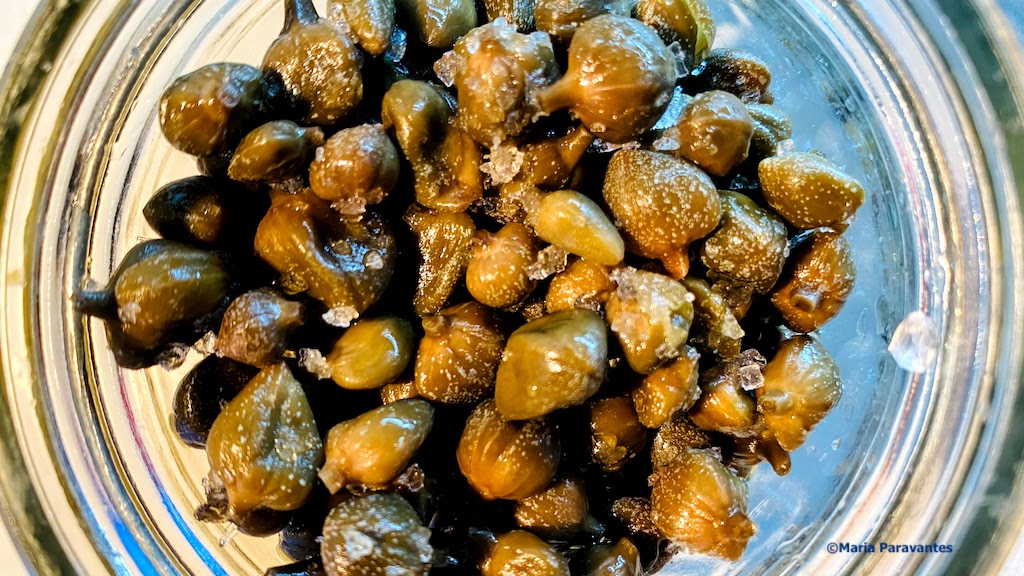
There… dangling from a crook or cranny against the dry barren landscape, a green bush like a breath of fresh air emerges coyly seeking the sun’s rays. This green bush and its buds is just one of Greece’s many culinary wonders: ladies and gentlemen, meet the foodie’s delight, the tiny but magnificent Greek caper: her name kapari.
You’re bound to come across this tiny treat during a walk along the ancient footpaths of the Cyclades islands but also in the low lands of the Peloponnese.
This resilient bush bears a bud that offers the sharpest burst of taste you will come across. Its fleshy leaves, once soaked in vinegar and sea salt, create one of the finest pickled delicacies, while its petite fruit – sweeter and a tad bigger – gives salads and sauces that extra tang.
Botanists know this specialty food item as “Capparis spinosa”, but for us Greeks it’s simply “kapari”. And yes, it may be small to the eye, but when added to salads and sauces, the effect is grand.
► The Meze: Greece’s Famous Snacks
Kapari: A Resilient Bush, its Bud & Leaves
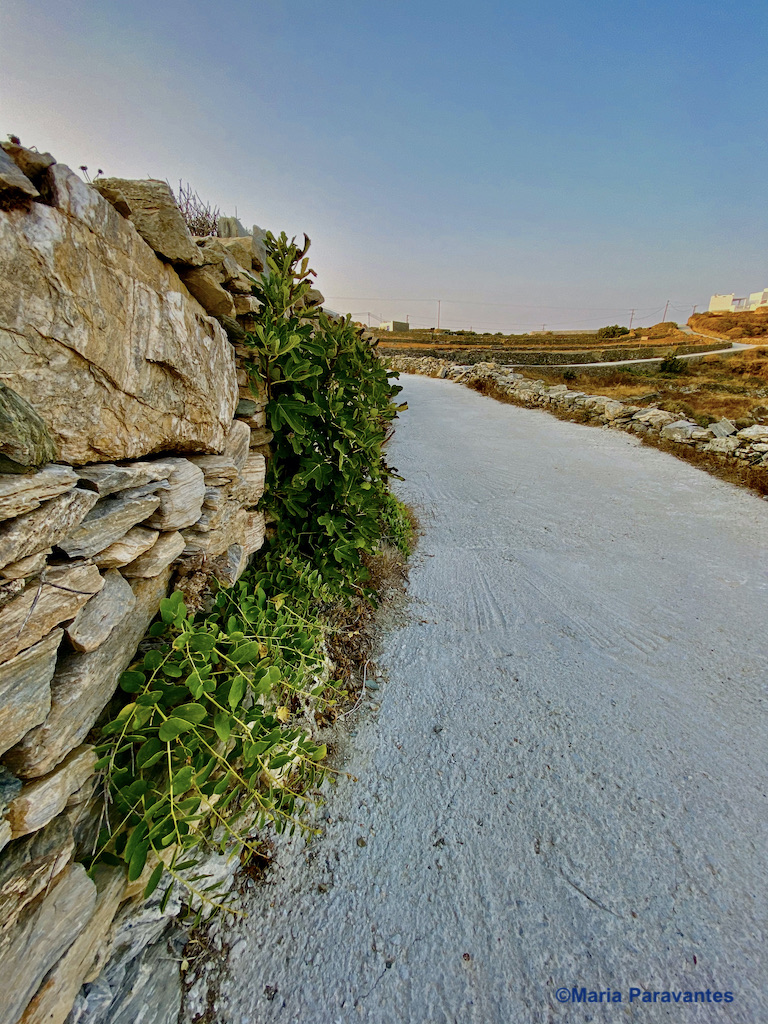
This inconspicuous plant needs little water and no care, growing almost anywhere along walls, under rocks or stones, withstanding humidity and veiled from the winds.
Every part of the caper bush is edible: the leaves, the buds and the fruit. And though there are some 250 types of caper bush in the world, including in such far off places as India, Afghanistan, and in the southwestern Mediterranean, the caper native to Greece is the only variety that grows wild and is not a product of specialized culture, contrary to capers shipped in from other Mediterranean countries (Turkey, Italy, France, Spain, Morocco), which are cultivated.
The finest capers in Greece come from the Cycladic islands of Syros, Tinos, Sikinos and Folegandros. As for the leaves, unrivaled are those from the Peloponnese. The round crispy buds have a sharp, tart taste that brings the Mediterranean to any dish. While the fruit, known as the caper berry, is larger and sweeter, much like a small olive.
The minute green buds are handpicked very early in the morning just before they blossom at the start of summer, between May and June. The leaves may be picked later, followed by the fruit once they grow.
Kapari is never consumed raw as it is bitter.
The process of making it edible however is easy. After collecting the buds, we let them dry out in the sun for several days before placing them in a jar with sea salt, water and vinegar. This pickling process releases capric acid, which transforms the caper into a tiny, piquant powerhouse.
The kapari from the island of Tinos is by far the finest I have tasted: perfectly plump, dense, juicy and tangy. If you visit make sure to buy some and take home with you.
► Visiting Greece? The Top Things to Know
The Greek Caper & its Therapeutic Effects
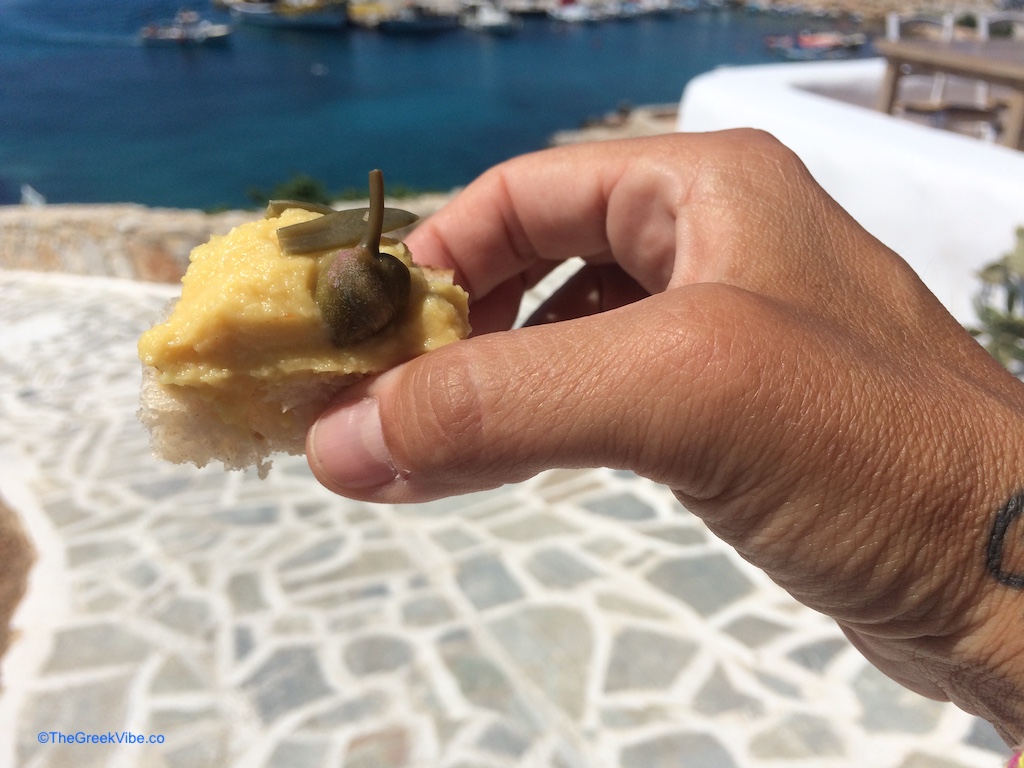
The health benefits of the caper – rich in vitamins, minerals and antioxidants – have been praised as far back as antiquity with mentions and observations of its therapeutic features in the records and findings of philosopher and “father of botany” Theophrastus, Athenaeus, and pharmacologist Dioscorides.
It goes without saying however, that the caper’s leading role is in the Greek kitchen where it makes its way into local dishes, infusing these with the taste of the Aegean sea. Among these, the famed Cyclades dish: “fava pantremeni” (split pea dip), kapari is just perfect in a Greek salad, it adds a special touch to the Cretan “dako” (rusk), makes in fine seafood or tomato sauce accompanying pasta, “kapari yiachni” (in red sauce) as made on Folegandros, Sifnos and neighbouring Serifos, the famed Syros caper-potato salad, accompanying meat or fish, caper fritters (“kaparokeftedes”), capers and black-eyed beans with caramelized onions, and the list goes on… Capers are also one of the basic ingredients of Tartar sauce.
Caper shoots also make a wonderful hors d’ oeuvres. Pickled in jars of olive oil and wine vinegar or brine, the leaves added to a Kythera rusk together with a sardine make an excellent “meze” to accompany ouzo or raki. Learn more about the Greek meze here
► Easy to Pick Greek Island(s) for Your Vacation
Tinos Pays Tribute to its Caper
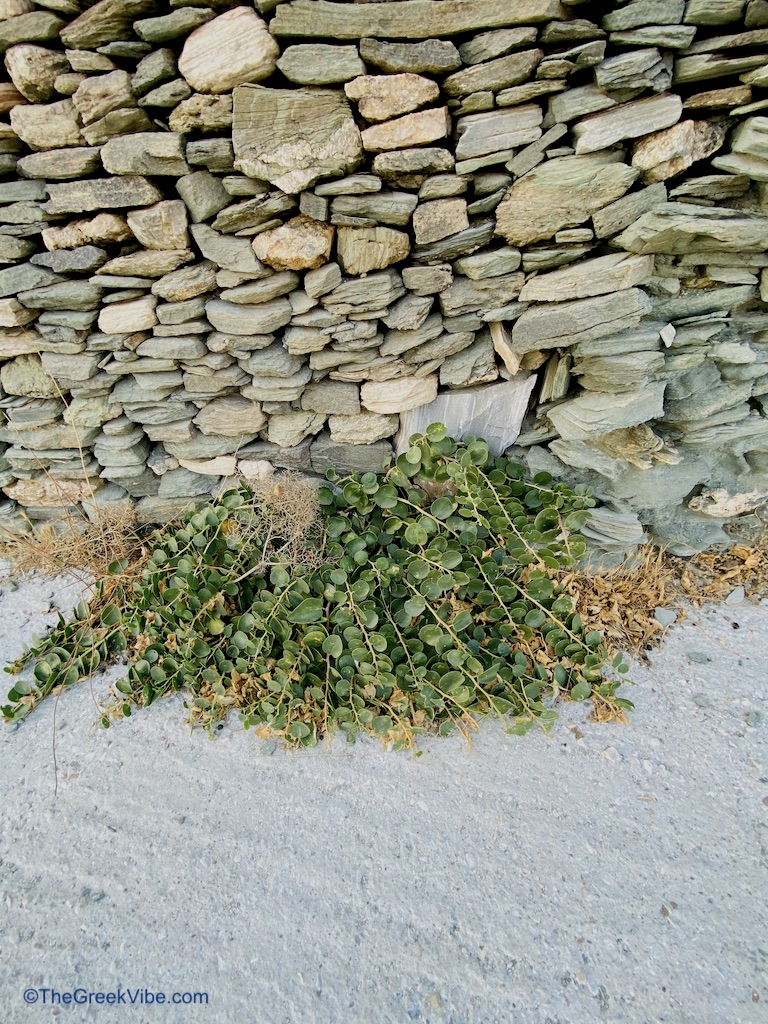
Every year, come July, the Cycladic island of Tinos holds its annual caper festival – the “Giorti tis Kaparis” – in the village of Potamia. Similar summer happenings take place in many Greek towns and villages which boast a particular crop or product. And so the Tinians decided to promote one of their finest yields.
As every other Greek summer celebration, the Tinos caper event features plenty of song and dance and offers visitors insight into the many ways capers can be used in traditional but also contemporary cuisine with local women showcasing their cooking talent.
The event is also an effort by Tinos islanders to captialize on local produce, stressing the commercial potential of the Tinos caper (if exported and promoted) and how it seems unsound for a country with caper bushes growing everywhere to import tons of capers from abroad.
👉🏼 Dream of visiting Greece? Start planning
♫ I end today’s savory post with a tune about – what else – kapari, performed here by rebetika great Michalis Genitsaris about a caper that grows wild in the mountains but is as sweet as sugar on the lips. “Sta Ori Bgainei I Kapari”.
❤️ Follow The Greek Vibe on TikTok too!
Enjoyed this Post? Share and Pin it!
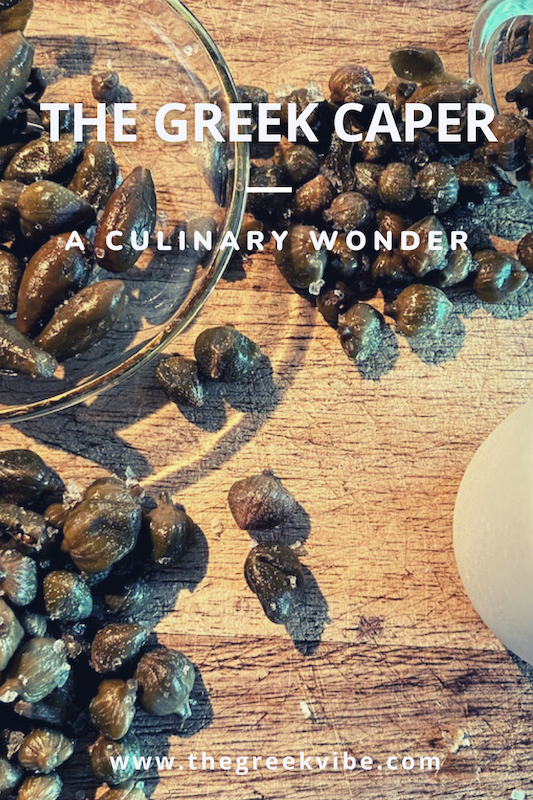

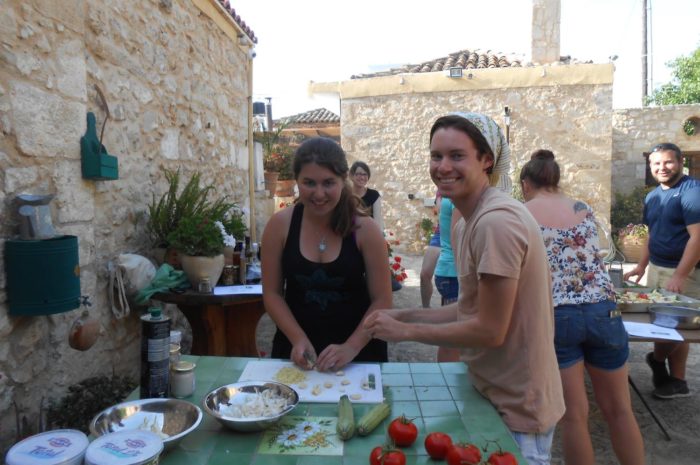
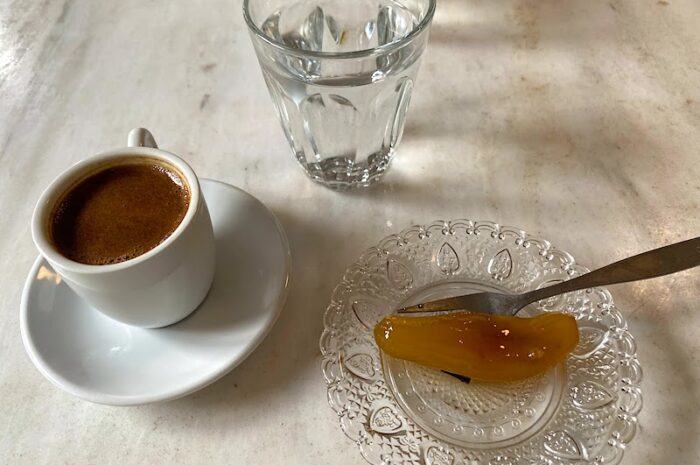
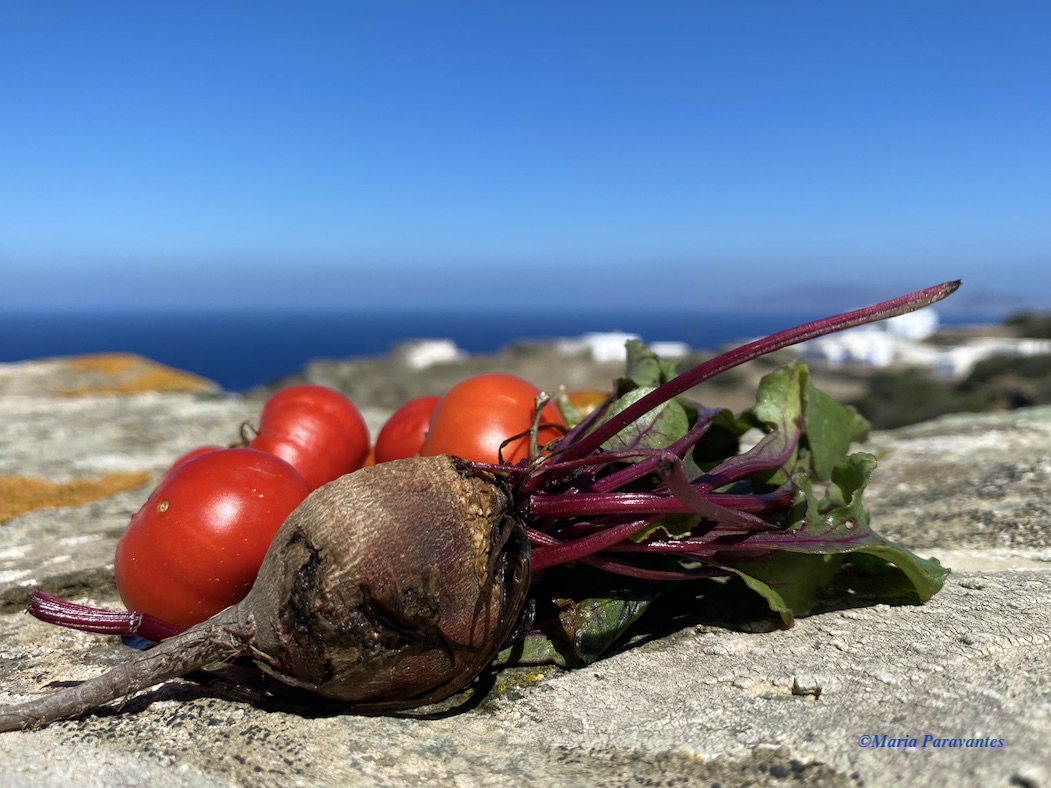
Who knew how much went into the humble caper?? I’ve eaten them before but never given them a thought as to where they grow or different varieties. Interesting article.
Thank you Anita. Very few people really know what the caper is and how to eat it. It may be small to the eye but it’s a real wonder.